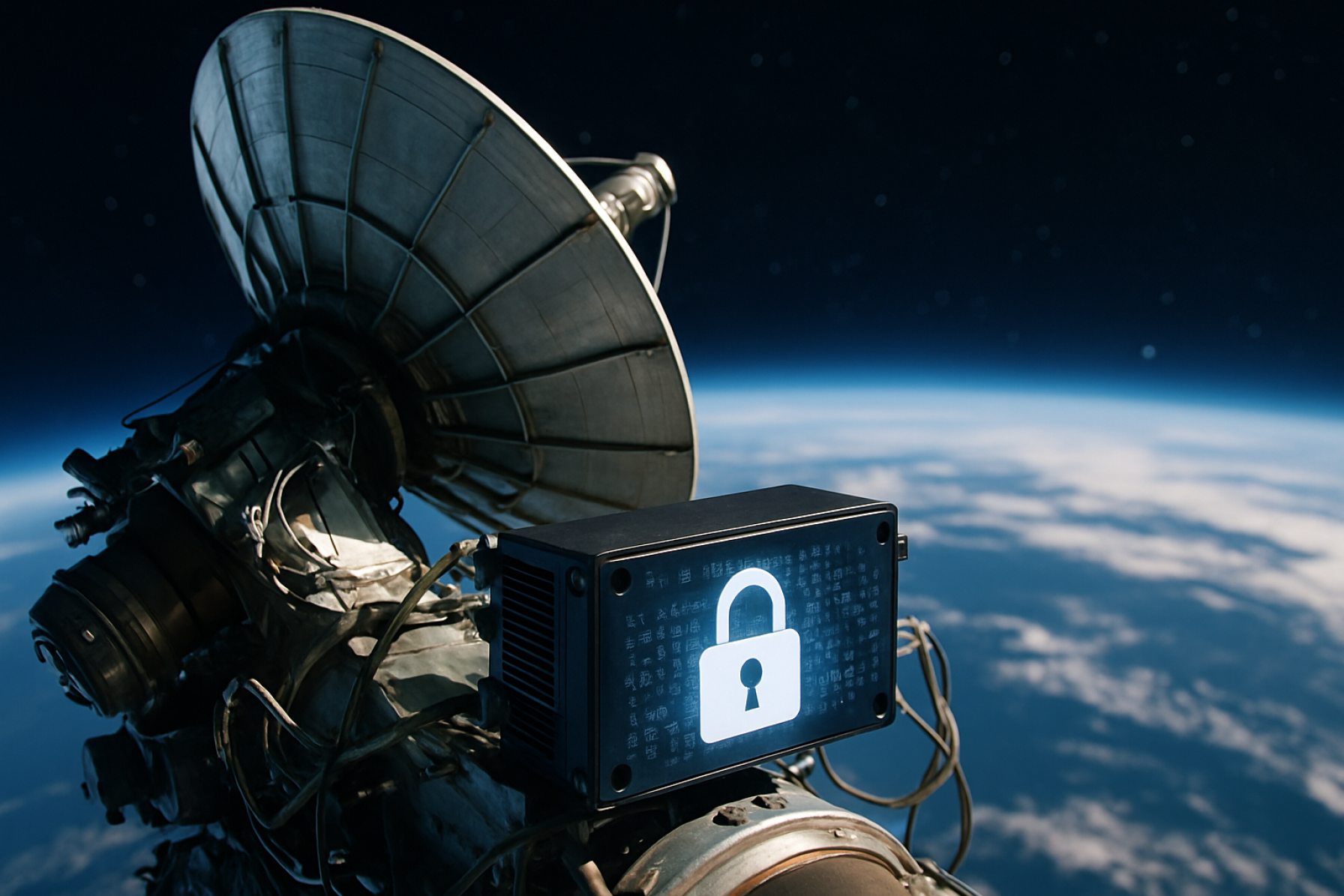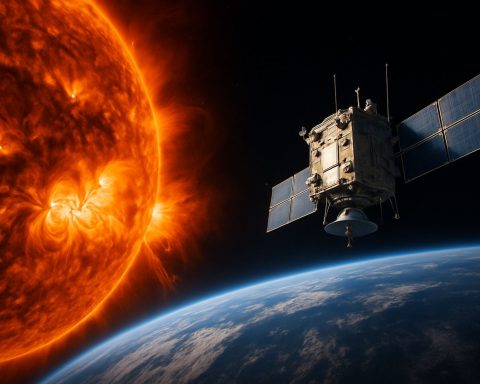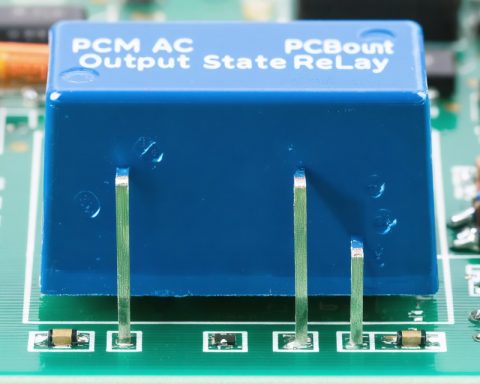Satellite Telemetry Encryption Systems in 2025: How Advanced Cryptography is Transforming Space Communications. Explore the Market Forces, Innovations, and Security Imperatives Shaping the Next Five Years.
- Executive Summary and Key Findings
- Market Size, Growth Rate, and 2025–2030 Forecasts
- Core Technologies: Encryption Algorithms and Protocols
- Regulatory Landscape and Compliance Requirements
- Major Industry Players and Strategic Initiatives
- Emerging Threats and Security Challenges
- Integration with Next-Generation Satellite Architectures
- Case Studies: Government, Commercial, and Defense Applications
- Innovation Pipeline: Quantum-Resistant and AI-Driven Encryption
- Future Outlook: Opportunities, Risks, and Strategic Recommendations
- Sources & References
Executive Summary and Key Findings
Satellite telemetry encryption systems are rapidly evolving in response to escalating cybersecurity threats and the increasing strategic importance of space-based assets. As of 2025, the sector is witnessing a surge in demand for advanced encryption solutions, driven by the proliferation of commercial and governmental satellite constellations, the expansion of Earth observation and communications networks, and heightened concerns over data interception and signal spoofing. The integration of quantum-resistant algorithms, end-to-end encryption, and secure key management protocols is becoming standard practice among leading satellite manufacturers and operators.
Key industry players such as Lockheed Martin, Northrop Grumman, and Thales Group are at the forefront of developing and deploying robust telemetry encryption systems. These companies are leveraging their expertise in defense-grade cryptography and secure communications to address the unique challenges posed by the space environment, including limited bandwidth, latency constraints, and the need for autonomous in-orbit key management. For instance, Thales Group has been actively involved in providing encryption solutions for both military and commercial satellite missions, emphasizing compliance with international standards and interoperability across multi-vendor platforms.
Recent events highlight the urgency of enhanced encryption. In 2024, several high-profile incidents involving attempted signal jamming and unauthorized access to satellite telemetry underscored vulnerabilities in legacy systems. In response, agencies such as the European Space Agency and the U.S. Space Force have accelerated the adoption of next-generation encryption protocols and are collaborating with industry to establish best practices for secure satellite operations.
Looking ahead, the outlook for satellite telemetry encryption systems is shaped by several key trends:
- Adoption of quantum-resistant cryptography to future-proof satellite communications against emerging quantum computing threats.
- Integration of artificial intelligence and machine learning for real-time anomaly detection and adaptive security measures.
- Expansion of secure telemetry solutions to support mega-constellations and inter-satellite links, as pursued by companies like SpaceX and Airbus.
- Growing emphasis on international collaboration and standardization to ensure secure interoperability across diverse satellite networks.
In summary, the satellite telemetry encryption sector in 2025 is characterized by rapid technological advancement, increased regulatory scrutiny, and a clear shift toward proactive, resilient security architectures. The next few years will likely see further innovation and investment as stakeholders seek to safeguard critical space infrastructure against evolving cyber threats.
Market Size, Growth Rate, and 2025–2030 Forecasts
The global market for satellite telemetry encryption systems is experiencing robust growth, driven by escalating security requirements in both government and commercial satellite operations. As of 2025, the market is estimated to be valued in the low single-digit billions (USD), with projections indicating a compound annual growth rate (CAGR) of approximately 8–10% through 2030. This expansion is fueled by the proliferation of small satellite constellations, increased defense spending, and the growing adoption of advanced encryption standards to counter evolving cyber threats.
Key industry players such as Lockheed Martin, Northrop Grumman, and Thales Group are at the forefront of developing and supplying telemetry encryption solutions for both military and commercial satellite platforms. These companies are investing heavily in next-generation cryptographic modules and secure key management systems, responding to the demand for end-to-end data protection across satellite ground stations, uplinks, and downlinks.
The United States and Europe remain the largest markets, propelled by government mandates for classified and sensitive satellite communications. The U.S. National Security Agency (NSA) Type 1 encryption requirements, for example, are a significant driver for adoption in defense and intelligence applications. Meanwhile, the European Space Agency and national defense agencies are also prioritizing secure telemetry for both civil and military missions, further boosting regional demand.
Commercial satellite operators are increasingly investing in encryption systems to protect proprietary data and comply with regulatory frameworks. The rise of mega-constellations for broadband internet, Earth observation, and IoT connectivity—led by companies such as SpaceX and OneWeb—is expanding the addressable market for telemetry encryption. These operators are seeking scalable, cost-effective solutions that can be integrated into large fleets of satellites, driving innovation in lightweight and software-defined encryption technologies.
Looking ahead to 2030, the market outlook remains positive, with anticipated growth in Asia-Pacific and the Middle East as regional space programs mature and invest in secure satellite infrastructure. The ongoing evolution of quantum-resistant encryption and the integration of artificial intelligence for anomaly detection in telemetry streams are expected to create new opportunities and reshape competitive dynamics. As satellite networks become more interconnected and critical to global communications, the demand for robust telemetry encryption systems will continue to accelerate, underpinning the security of space-based assets worldwide.
Core Technologies: Encryption Algorithms and Protocols
Satellite telemetry encryption systems are undergoing rapid evolution in 2025, driven by the increasing sophistication of cyber threats and the growing reliance on satellite data for critical infrastructure, defense, and commercial applications. At the core of these systems are advanced encryption algorithms and secure communication protocols designed to protect telemetry data as it is transmitted between satellites and ground stations.
The industry standard for satellite telemetry encryption remains the Advanced Encryption Standard (AES), particularly AES-256, due to its robust security and efficiency. AES is widely adopted by major satellite manufacturers and operators, including Lockheed Martin and Northrop Grumman, for both military and commercial satellite platforms. These companies integrate hardware-based cryptographic modules that implement AES and other algorithms, ensuring real-time encryption and decryption of telemetry streams.
In addition to symmetric encryption like AES, public key infrastructure (PKI) and asymmetric algorithms such as RSA and Elliptic Curve Cryptography (ECC) are increasingly used for key exchange and authentication. ECC, in particular, is gaining traction due to its smaller key sizes and lower computational requirements, which are advantageous for satellites with limited onboard processing power. Companies such as Thales Group and Raytheon Technologies are actively developing and deploying ECC-based solutions for secure satellite communications.
Protocols such as the Secure Telemetry and Command Protocol (STCP) and the Consultative Committee for Space Data Systems (CCSDS) Space Data Link Security (SDLS) protocol are being adopted to standardize secure telemetry transmission. The SDLS protocol, in particular, is endorsed by international space agencies and is being implemented in new satellite missions to provide end-to-end data confidentiality, integrity, and authentication.
Looking ahead, the industry is preparing for the advent of quantum computing, which poses a potential threat to current encryption standards. Research and pilot projects into post-quantum cryptography are underway, with organizations like Airbus and Boeing exploring quantum-resistant algorithms for future satellite systems. The next few years are expected to see the gradual integration of these algorithms into satellite telemetry encryption frameworks, ensuring long-term data security.
Overall, the convergence of advanced encryption algorithms, secure protocols, and quantum-resilient technologies is shaping the future of satellite telemetry encryption systems, with leading aerospace and defense companies at the forefront of innovation and deployment.
Regulatory Landscape and Compliance Requirements
The regulatory landscape for satellite telemetry encryption systems is rapidly evolving in 2025, driven by increasing concerns over data security, national sovereignty, and the proliferation of both commercial and governmental satellite operations. Regulatory bodies worldwide are tightening requirements for the encryption of telemetry, tracking, and command (TT&C) links to mitigate risks of interception, spoofing, and unauthorized access.
In the United States, the Federal Communications Commission (FCC) and the National Aeronautics and Space Administration (NASA) continue to enforce strict encryption standards for satellite telemetry, particularly for missions involving sensitive or classified data. The National Security Agency (NSA) also plays a pivotal role, mandating the use of Type 1 encryption for government and defense-related satellites. These requirements are echoed in the Department of Defense’s (DoD) updated policies, which now extend to commercial satellite operators providing services to government clients. The U.S. government’s push for end-to-end encryption and key management solutions is influencing the broader market, with companies such as Northrop Grumman and Lockheed Martin integrating advanced cryptographic modules into their satellite platforms.
In Europe, the European Space Agency (ESA) and national regulators are harmonizing encryption requirements across member states, emphasizing compliance with the EU’s General Data Protection Regulation (GDPR) and the NIS2 Directive, which covers critical infrastructure, including space assets. The ESA’s Space Security Programme is actively developing guidelines for secure telemetry, with a focus on quantum-resistant algorithms and robust key distribution mechanisms. European satellite manufacturers such as Airbus and Thales Group are at the forefront of implementing these standards, often collaborating with national cybersecurity agencies.
In Asia, countries like Japan and India are updating their space security frameworks. The Japan Aerospace Exploration Agency (JAXA) and the Indian Space Research Organisation (ISRO) are both enhancing encryption protocols for their satellite fleets, aligning with international best practices and, in some cases, developing indigenous cryptographic solutions.
Looking ahead, the regulatory trend is toward mandatory adoption of advanced encryption—potentially including post-quantum cryptography—across all satellite telemetry systems. Compliance will increasingly require not only technical upgrades but also rigorous audit trails and real-time monitoring. As satellite constellations grow and cross-border data flows intensify, international coordination among regulatory bodies is expected to become more prominent, shaping a global baseline for satellite telemetry encryption in the coming years.
Major Industry Players and Strategic Initiatives
The satellite telemetry encryption systems sector is witnessing significant activity in 2025, driven by escalating concerns over data security, regulatory mandates, and the proliferation of both commercial and government satellite constellations. Major industry players are investing in advanced cryptographic solutions, secure key management, and resilient communication protocols to safeguard telemetry, tracking, and command (TT&C) links.
Among the leading companies, Lockheed Martin continues to play a pivotal role, leveraging its extensive experience in military and commercial satellite systems. The company is actively developing next-generation encryption modules and integrating quantum-resistant algorithms into its satellite platforms, in line with evolving U.S. Department of Defense (DoD) requirements. Similarly, Northrop Grumman is advancing its secure communications portfolio, focusing on end-to-end encryption for both government and commercial clients, and collaborating with agencies to ensure compliance with the latest National Security Agency (NSA) standards.
In Europe, Airbus is a key player, providing secure telemetry solutions for both civil and defense satellites. The company is investing in post-quantum cryptography research and has announced partnerships with European space agencies to develop robust encryption frameworks for upcoming satellite constellations. Thales Group is also prominent, offering a suite of encryption products tailored for satellite telemetry and command links, and is actively involved in the European Union’s initiatives to enhance space infrastructure security.
On the supplier side, Kratos Defense & Security Solutions is recognized for its ground station encryption hardware and software, supporting secure TT&C for a wide range of satellite operators. The company is expanding its product line to address the growing demand for scalable, cloud-integrated encryption solutions, particularly as ground segment virtualization becomes more prevalent.
Strategic initiatives across the industry include the adoption of quantum key distribution (QKD) pilots, the integration of artificial intelligence for anomaly detection in encrypted telemetry streams, and the development of interoperable encryption standards. These efforts are often coordinated with government agencies and international bodies to ensure cross-border compatibility and resilience against emerging cyber threats.
Looking ahead, the outlook for satellite telemetry encryption systems is shaped by the rapid deployment of low Earth orbit (LEO) mega-constellations, the increasing sophistication of cyberattacks, and the anticipated introduction of quantum computing. Industry leaders are expected to accelerate R&D investments, form new alliances, and push for regulatory harmonization to maintain the integrity and confidentiality of satellite telemetry in an increasingly contested space environment.
Emerging Threats and Security Challenges
Satellite telemetry encryption systems are facing a rapidly evolving threat landscape in 2025, driven by advances in cyber capabilities, the proliferation of commercial satellite technology, and the increasing strategic value of space-based assets. As satellites become integral to critical infrastructure, military operations, and commercial services, the security of telemetry links—responsible for transmitting vital command and control data—has become a focal point for both state and non-state actors.
One of the most significant emerging threats is the sophistication of cyberattacks targeting satellite telemetry. Adversaries are leveraging advanced persistent threats (APTs), signal interception, and spoofing techniques to compromise or manipulate telemetry data. The 2022 Viasat KA-SAT network incident, which disrupted communications across Europe, underscored the vulnerability of satellite ground infrastructure and the need for robust encryption and authentication mechanisms. In response, leading satellite operators and manufacturers such as Lockheed Martin, Northrop Grumman, and Thales Group have accelerated the integration of next-generation cryptographic modules and quantum-resistant algorithms into their telemetry systems.
The transition to quantum-resistant encryption is a key trend, as quantum computing threatens to render traditional public-key cryptography obsolete. Organizations like Thales Group and Airbus are actively developing and testing post-quantum cryptographic solutions for satellite telemetry, anticipating regulatory requirements and future-proofing their platforms. The European Space Agency and the U.S. Space Force have also initiated collaborative programs with industry partners to standardize quantum-safe encryption protocols for both government and commercial satellites.
Another challenge is the increasing use of commercial-off-the-shelf (COTS) components in satellite systems, which can introduce supply chain vulnerabilities and potential backdoors. Companies such as Raytheon Technologies and Boeing are investing in secure hardware design and trusted supply chain frameworks to mitigate these risks, while also supporting the adoption of hardware-based encryption modules that comply with evolving standards from organizations like the National Institute of Standards and Technology (NIST).
Looking ahead, the outlook for satellite telemetry encryption systems will be shaped by regulatory developments, the pace of quantum technology adoption, and the ongoing arms race between attackers and defenders. The industry is expected to see increased collaboration between satellite operators, defense agencies, and cybersecurity firms to share threat intelligence and develop interoperable, resilient encryption solutions. As the number of satellites in orbit continues to grow, ensuring the integrity and confidentiality of telemetry data will remain a top priority for the global space sector.
Integration with Next-Generation Satellite Architectures
The integration of satellite telemetry encryption systems with next-generation satellite architectures is a critical focus for the space industry in 2025 and the coming years. As satellite constellations become more complex and diverse—incorporating low Earth orbit (LEO), medium Earth orbit (MEO), and geostationary (GEO) platforms—encryption systems must evolve to address new security, interoperability, and scalability challenges.
Major satellite manufacturers and operators are actively embedding advanced encryption modules into their latest platforms. Lockheed Martin and Northrop Grumman are integrating high-assurance cryptographic solutions into their next-generation satellite buses, supporting both government and commercial missions. These systems are designed to comply with stringent standards such as the National Security Agency’s Commercial Solutions for Classified (CSfC) program, ensuring end-to-end protection of telemetry, tracking, and command (TT&C) data.
The shift toward software-defined payloads and reconfigurable satellites is also influencing encryption strategies. Companies like Airbus and Thales are developing flexible encryption frameworks that can be updated over-the-air, allowing satellites to adapt to evolving threats and mission requirements throughout their operational lifespans. This approach is particularly relevant for mega-constellations, where rapid deployment and in-orbit reconfiguration are essential.
Interoperability is another key consideration as multi-vendor satellite networks become more prevalent. The adoption of standardized encryption protocols, such as those promoted by the European Telecommunications Standards Institute (ETSI) and the Consultative Committee for Space Data Systems (CCSDS), is facilitating secure cross-platform communication. These standards are being incorporated into new satellite designs to ensure seamless integration with ground infrastructure and other space assets.
Looking ahead, the convergence of quantum-resistant cryptography and satellite telemetry encryption is gaining momentum. Organizations like Raytheon Technologies are investing in research to develop encryption algorithms that can withstand future quantum computing threats, aiming for deployment in satellites launching later this decade. Additionally, the integration of secure key management systems, including on-board key generation and distribution, is becoming standard practice to further enhance the resilience of satellite telemetry links.
In summary, the integration of advanced telemetry encryption systems with next-generation satellite architectures is accelerating in 2025, driven by the need for robust, adaptable, and interoperable security solutions. Industry leaders are prioritizing flexible, standards-based, and quantum-resistant approaches to safeguard the expanding and increasingly interconnected space ecosystem.
Case Studies: Government, Commercial, and Defense Applications
Satellite telemetry encryption systems are critical for ensuring the confidentiality, integrity, and authenticity of data transmitted between satellites and ground stations. In 2025, the rapid expansion of satellite constellations and the increasing sophistication of cyber threats have driven both government and commercial operators to adopt advanced encryption solutions. This section examines recent case studies across government, commercial, and defense sectors, highlighting the evolving landscape and future outlook.
Government Applications: National space agencies have prioritized robust encryption for telemetry, tracking, and command (TT&C) links. For example, the National Aeronautics and Space Administration (NASA) has implemented end-to-end encryption for its Artemis lunar missions, leveraging hardware security modules and quantum-resistant algorithms to protect mission-critical data. Similarly, the European Space Agency (ESA) has upgraded its ground segment infrastructure to support advanced cryptographic protocols, ensuring secure communications for Earth observation and interplanetary missions. These agencies are also collaborating on interoperability standards to facilitate secure data exchange in joint missions.
Commercial Applications: The commercial satellite sector, led by operators such as SES S.A. and Intelsat, has seen a surge in demand for encrypted telemetry as customers in telecommunications, broadcasting, and IoT require higher data protection. Companies like Thales Group and Airbus are supplying encryption modules and secure key management systems for both geostationary and low Earth orbit (LEO) satellites. In 2025, these firms are integrating post-quantum cryptography into their solutions, anticipating future threats from quantum computing. The adoption of standardized encryption frameworks is also enabling interoperability between different satellite platforms and ground networks.
Defense Applications: Defense agencies worldwide are at the forefront of satellite telemetry encryption, given the sensitivity of military communications. The Lockheed Martin Corporation and Northrop Grumman Corporation are equipping new military satellites with tamper-resistant encryption hardware and dynamic key distribution systems. The U.S. Department of Defense, through its Space Development Agency, is deploying mesh networks of small satellites with resilient, end-to-end encrypted telemetry links to support real-time situational awareness and command and control. These systems are designed to withstand electronic warfare and cyberattacks, reflecting the heightened threat environment.
Outlook: Over the next few years, the convergence of quantum-safe encryption, AI-driven anomaly detection, and international standardization will shape the future of satellite telemetry security. As satellite networks become more interconnected and autonomous, the need for scalable, interoperable, and future-proof encryption systems will intensify, driving further innovation and collaboration among industry leaders and government agencies.
Innovation Pipeline: Quantum-Resistant and AI-Driven Encryption
Satellite telemetry encryption systems are undergoing rapid transformation as the industry anticipates the dual challenges of quantum computing threats and increasingly sophisticated cyberattacks. In 2025, the innovation pipeline is dominated by two major trends: the development of quantum-resistant cryptography and the integration of artificial intelligence (AI) for adaptive security.
Quantum-resistant, or post-quantum, encryption is a top priority for satellite operators and manufacturers. The looming advent of quantum computers threatens to render traditional public-key algorithms, such as RSA and ECC, obsolete. In response, leading satellite technology providers are actively testing and piloting new cryptographic schemes based on lattice, hash-based, and multivariate polynomial algorithms. For example, Lockheed Martin has publicly discussed its research into quantum-safe communications for both military and commercial satellite platforms, aiming to future-proof telemetry, tracking, and command (TT&C) links. Similarly, Airbus is collaborating with European partners to integrate post-quantum cryptography into its secure satellite communications infrastructure, with field trials expected to expand in 2025.
AI-driven encryption is also gaining traction as satellite networks become more complex and dynamic. AI and machine learning algorithms are being deployed to monitor telemetry data streams in real time, detect anomalies, and automatically adjust encryption parameters to counter emerging threats. Northrop Grumman is investing in AI-enabled cybersecurity solutions for its satellite systems, focusing on autonomous threat detection and response. These systems can adapt encryption keys and protocols on the fly, reducing the window of vulnerability and improving resilience against zero-day exploits.
The innovation pipeline is further supported by industry-wide initiatives and standardization efforts. Organizations such as the European Space Agency and NASA are funding research into both quantum-resistant and AI-driven encryption, with the goal of establishing interoperable standards for secure satellite telemetry. In 2025 and the coming years, these efforts are expected to yield pilot deployments and, eventually, operational rollouts across government and commercial satellite fleets.
Looking ahead, the convergence of quantum-resistant algorithms and AI-driven security is set to define the next generation of satellite telemetry encryption systems. As the threat landscape evolves, the industry’s proactive approach—combining advanced cryptography with intelligent, adaptive defenses—will be critical to safeguarding the integrity and confidentiality of satellite communications well into the future.
Future Outlook: Opportunities, Risks, and Strategic Recommendations
The future of satellite telemetry encryption systems is shaped by rapid technological advancements, evolving threat landscapes, and increasing commercial and governmental reliance on secure satellite communications. As of 2025, the proliferation of low Earth orbit (LEO) constellations, the expansion of defense satellite programs, and the integration of new encryption standards are driving both opportunities and risks in this sector.
Opportunities are emerging from the growing demand for secure telemetry in commercial satellite operations, particularly as companies like Space Exploration Technologies Corp. (SpaceX) and OneWeb expand their LEO constellations for broadband and IoT services. These constellations require robust encryption to protect telemetry, tracking, and command (TT&C) links from interception and spoofing. The adoption of advanced cryptographic modules, such as those developed by Thales Group and L3Harris Technologies, is expected to accelerate, with a focus on quantum-resistant algorithms and real-time key management. Additionally, government initiatives, such as the U.S. Space Force’s push for resilient and secure satellite communications, are likely to set new benchmarks for encryption standards and interoperability.
However, the sector faces significant risks. The increasing sophistication of cyber threats, including state-sponsored attacks and the potential for quantum computing to break current encryption schemes, poses a persistent challenge. The transition to post-quantum cryptography is complex and requires coordination across satellite manufacturers, ground segment providers, and regulatory bodies. Companies like Northrop Grumman Corporation and Lockheed Martin Corporation are investing in research and partnerships to address these vulnerabilities, but the risk of legacy systems being compromised remains high during the transition period.
Strategic recommendations for stakeholders include prioritizing the integration of quantum-resistant encryption protocols, investing in agile and upgradable onboard cryptographic hardware, and fostering industry-wide collaboration on threat intelligence sharing. Satellite operators should work closely with trusted suppliers, such as Kratos Defense & Security Solutions and Cobham Limited, to ensure compliance with evolving standards and to implement layered security architectures. Furthermore, engagement with international standards bodies and active participation in cross-sector cybersecurity exercises will be critical to maintaining resilience as the threat landscape evolves.
In summary, the next few years will see satellite telemetry encryption systems at the forefront of both innovation and risk mitigation, with success hinging on proactive adoption of emerging technologies and collaborative defense strategies.
Sources & References
- Lockheed Martin
- Northrop Grumman
- Thales Group
- Airbus
- Raytheon Technologies
- Boeing
- National Aeronautics and Space Administration
- European Space Agency
- Japan Aerospace Exploration Agency
- Indian Space Research Organisation
- Consultative Committee for Space Data Systems (CCSDS)
- SES S.A.
- Intelsat
- L3Harris Technologies
- Cobham Limited









